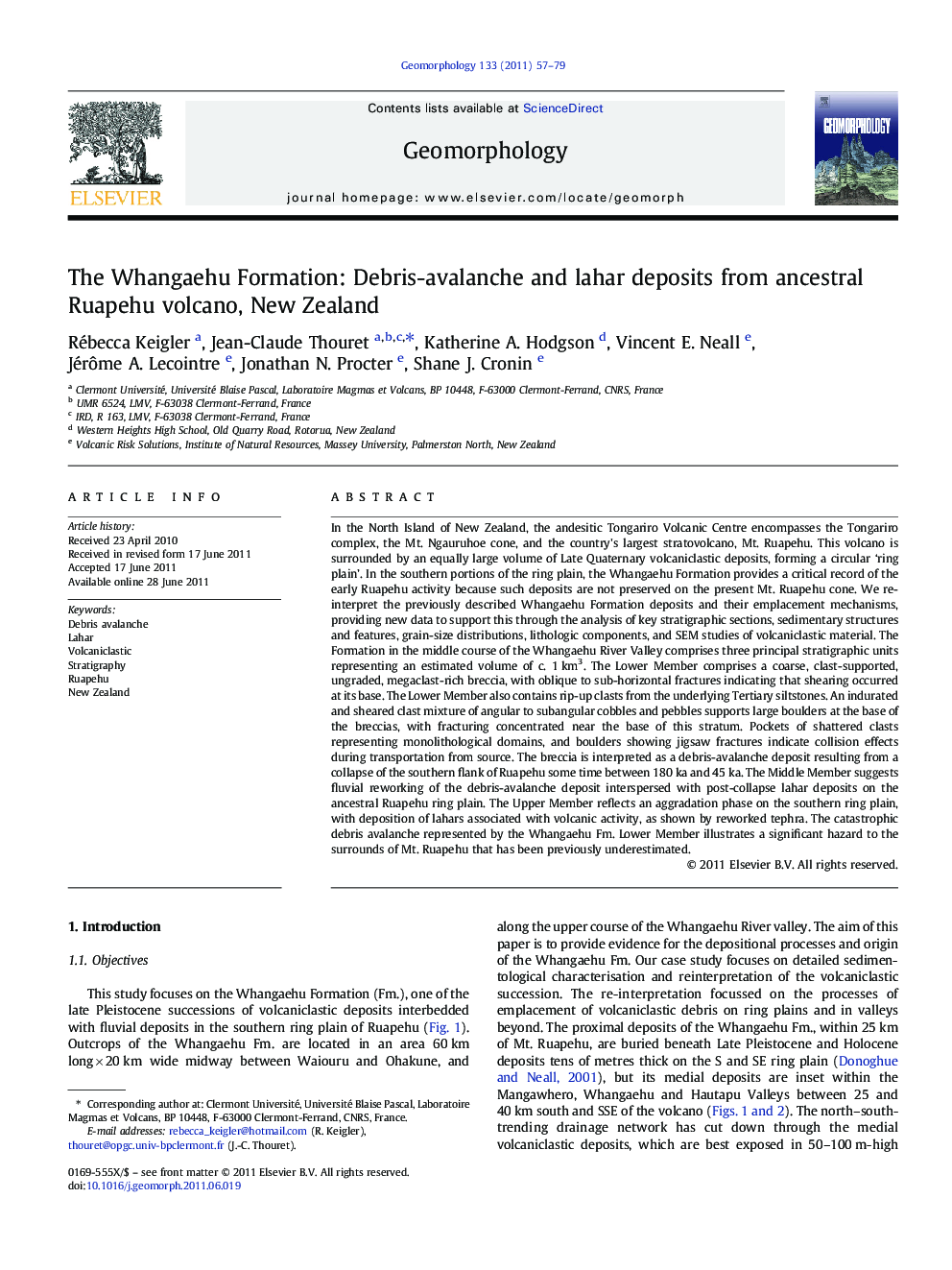| کد مقاله | کد نشریه | سال انتشار | مقاله انگلیسی | نسخه تمام متن |
|---|---|---|---|---|
| 4685483 | 1635495 | 2011 | 23 صفحه PDF | دانلود رایگان |

In the North Island of New Zealand, the andesitic Tongariro Volcanic Centre encompasses the Tongariro complex, the Mt. Ngauruhoe cone, and the country's largest stratovolcano, Mt. Ruapehu. This volcano is surrounded by an equally large volume of Late Quaternary volcaniclastic deposits, forming a circular ‘ring plain’. In the southern portions of the ring plain, the Whangaehu Formation provides a critical record of the early Ruapehu activity because such deposits are not preserved on the present Mt. Ruapehu cone. We re-interpret the previously described Whangaehu Formation deposits and their emplacement mechanisms, providing new data to support this through the analysis of key stratigraphic sections, sedimentary structures and features, grain-size distributions, lithologic components, and SEM studies of volcaniclastic material. The Formation in the middle course of the Whangaehu River Valley comprises three principal stratigraphic units representing an estimated volume of c. 1 km3. The Lower Member comprises a coarse, clast-supported, ungraded, megaclast-rich breccia, with oblique to sub-horizontal fractures indicating that shearing occurred at its base. The Lower Member also contains rip-up clasts from the underlying Tertiary siltstones. An indurated and sheared clast mixture of angular to subangular cobbles and pebbles supports large boulders at the base of the breccias, with fracturing concentrated near the base of this stratum. Pockets of shattered clasts representing monolithological domains, and boulders showing jigsaw fractures indicate collision effects during transportation from source. The breccia is interpreted as a debris-avalanche deposit resulting from a collapse of the southern flank of Ruapehu some time between 180 ka and 45 ka. The Middle Member suggests fluvial reworking of the debris-avalanche deposit interspersed with post-collapse lahar deposits on the ancestral Ruapehu ring plain. The Upper Member reflects an aggradation phase on the southern ring plain, with deposition of lahars associated with volcanic activity, as shown by reworked tephra. The catastrophic debris avalanche represented by the Whangaehu Fm. Lower Member illustrates a significant hazard to the surrounds of Mt. Ruapehu that has been previously underestimated.
► The Whangaehu Formation provides a critical record of the early Mt. Ruapehu activity.
► We analyse the stratigraphy and sedimentology of the Whangaehu Formation deposits.
► We distinguish the emplacement mechanisms of debris avalanches and lahars.
► We interpret the Lower Member of the Whangaehu Fm. as a debris-avalanche deposit.
► A collapse of the southern flank of Ruapehu occurred between 180 and 45 ka.
Journal: Geomorphology - Volume 133, Issues 1–2, 1 October 2011, Pages 57–79